It’s great for green thumbs of all skill levels to grow green chilies since it’s both an experience and a never-ending source of joy. You won’t believe how many chilies you can harvest from just one plant! Growing peppers from green chili seeds couldn’t be simpler. Using containers, you can grow your plants without even planting a garden. The following are some tips for speeding up the development of these fiery plants at home. Below we learn how to grow green chilies at home faster and care for chili plants for quick development, fruiting, and high yield.
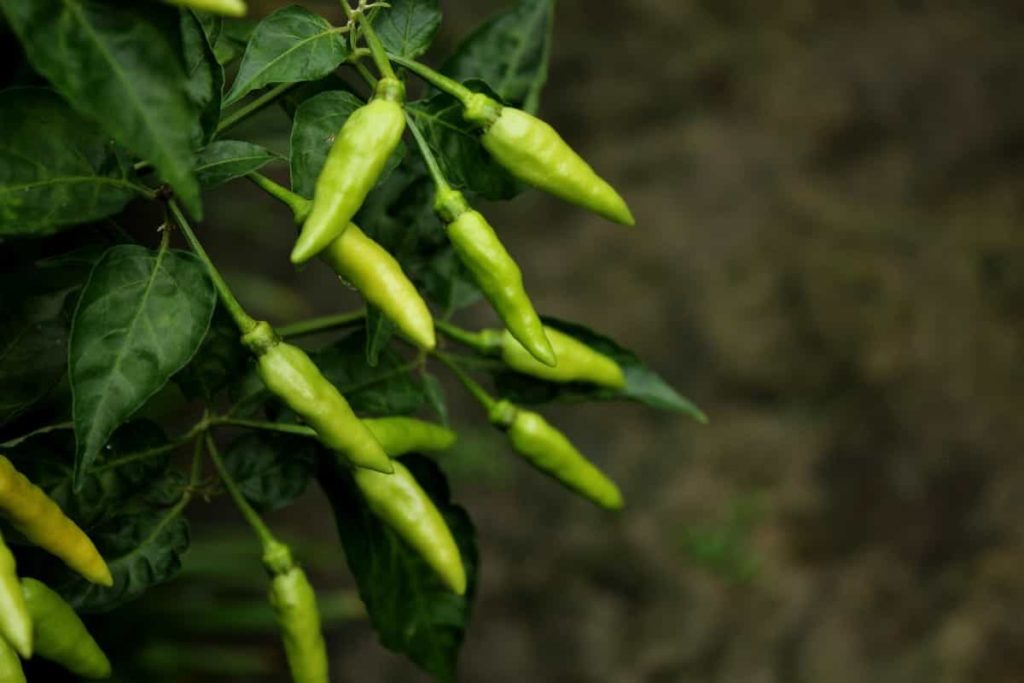
How to grow Green Chilli Peppers faster
Soil preparation is the key
Chili plants need well-drained, airy soil. Mix in some compost, even just a tiny amount. Don’t let the soil completely dry up. Depending on the weather, water every other day or every two days. Maintain a cycle of watering that alternates between wetting and drying. In 7-10 days after sowing the seeds, you’ll see two little leaves poking up through the soil. Maintain a consistent twice-weekly watering schedule, and place them in direct sunshine for at least four to six hours daily.
Following planting, the plant will take around one to one and a half months to grow to a height of eight to ten inches. At this point, it will start to develop small buds that will ultimately blossom into gorgeous little white flowers. After 7 to 10 days, the blossoms will naturally fall off the plant. Then you’ll see that a new, little chili plant has emerged in its place.
Start your chilly plants early
Seeds should be started inside as soon as possible, either in a sunny window or with artificial light, when temperatures are too low to plant outdoors. To prevent the seedlings from being killed by the lights, keep a constant check on them and position them so that they are no more than 6 inches apart. Germinating seeds are most successful when kept at temperatures 80–90 degrees Fahrenheit.
To keep your seedlings warm, utilize heat mats. The optimum germination rates can’t be achieved if pepper seeds are kept in an unheated greenhouse because of the fluctuating overnight temperatures. One way to speed up their development is to keep them warm. After the weather has been consistently 60 degrees for at least a month, prefer to transplant the peppers outdoors. It’s OK to move the plants outdoors after the soil has warmed up and the threat of frost has passed.
In case you missed it: Best Practices to Grow Green Chilli (Mirchi): The Best Guide for Beginners
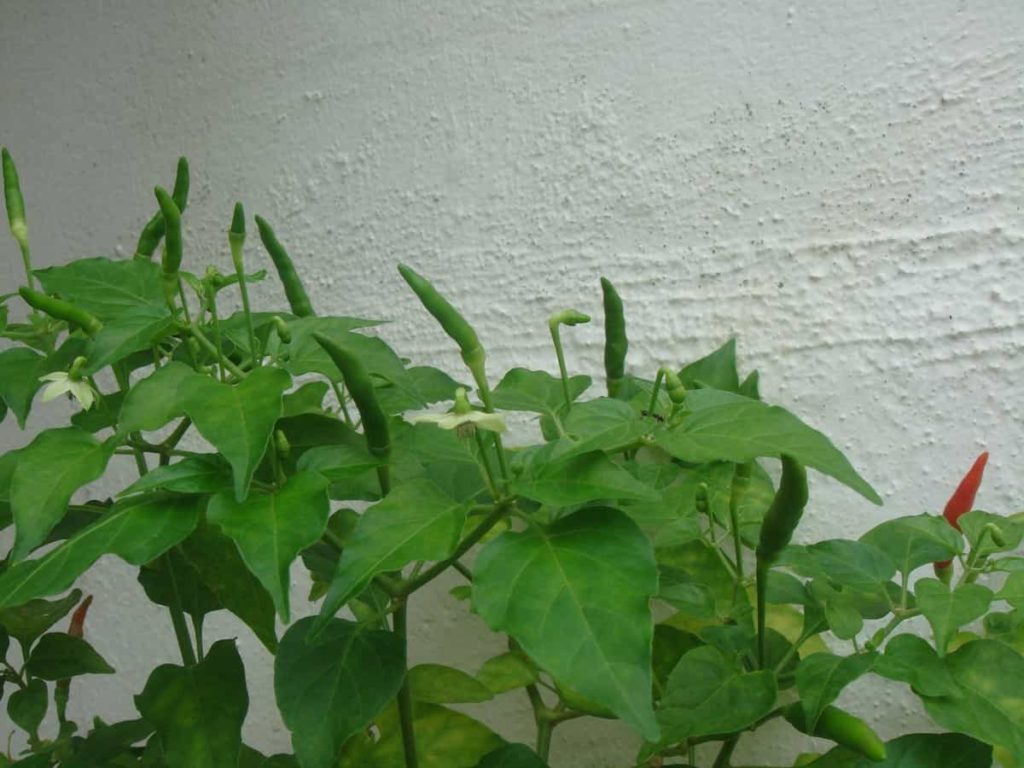
For optimal results, sow the seeds towards the end of winter. Most people start their seeds inside around the end of March when the weather finally begins to warm up. It’s ideal for germinating the seeds inside, so the plant has a head start when moved to the garden. You shouldn’t plant chiles outdoors until the last chance of frost has gone for the season since they suffer greatly when exposed to the cold. Getting an early start is crucial since it takes the seeds between two to four months to germinate, develop, and bear fruit.
Start using compost
Composting your yard waste, leaves, and food scraps is a fantastic method to enrich the soil for your chile pepper plants. Compost is the best fertilizer, which is full of worms and other creatures that offer nutrients to your plants. Composting during the growing season is an excellent method to increase the organic matter in your soil and reduce your need for synthetic fertilizers. Before replacing the soil around each plant, we prefer to put a layer of compost down first.
As the plant’s roots expand into the buried compost, it receives a steady supply of nutrients throughout the growing season. You can use compost as a top dressing in the garden throughout the summer but keep it away from the plant’s stems. Also, you can cover the pepper plants with grass clippings and leaves to keep the soil wet and cut down on watering. Mulch like this helps maintain consistent soil temperatures and sustains the worms and other soil inhabitants that benefit your chili pepper plants.
Sunlight is important
As soon as the seeds sprout, transfer the plant to a more sunny location. After the seeds have germinated, you can safely transplant them to a location where they will get more direct sunlight. In this new, warmer environment, keeping an eye on the soil and water levels is essential to ensure the plant doesn’t dry up. A solarium or a sunny window seat can provide a warmer alternative.
The chili plant needs at least six hours of sunshine daily to thrive. Plants do best when kept in a warm, protected location, like a windowsill. They just need 6 hours of sunshine daily to reach their full growth potential, although the more light they get, the better. Put your chili plant in a spot that never drops below 59 degrees Fahrenheit (15 degrees Celsius). Since peppers can’t be grown inside, they should be kept in the open air for as long as possible.
Harden off your green chili plants
When preparing to move your pepper plants outside, you must first allow them to harden off. This is achieved by bringing them outdoors for increasingly longer durations of time over the course of several days to a week. This will aid them in adapting to the considerably brighter outside light and temperature changes and help their stems grow stronger with the winds. It is best to remove the first blooms to encourage the plant to grow larger and provide much more peppers over time.
In case you missed it: How to Grow Isabgol Plants for Beginners: Guide and Steps to Propagation, Planting, and Care
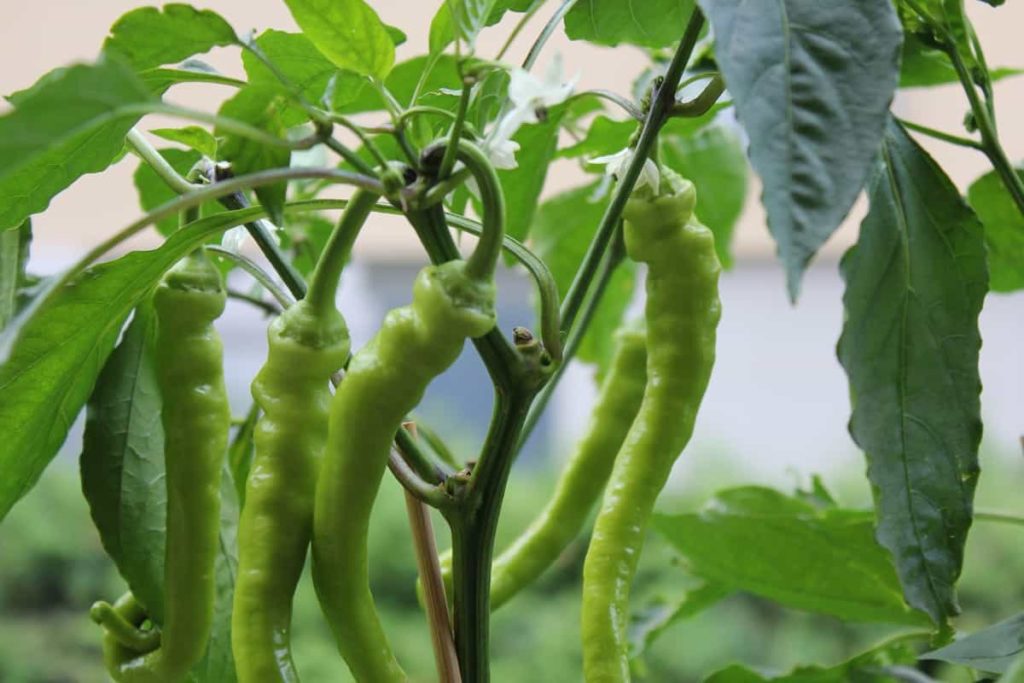
Water your chili plants carefully
The plant needs watering twice or thrice a week. Chili plants want to dry out a little in between waterings, so don’t worry if the plant dries out a little. Be sure to give the soil a good soaking whenever you water it and don’t let it dry out completely between waterings. Too much water means the soil is soggy or runs out of the container too quickly.
Start cloning and use transplants.
In case you didn’t know, several types of spicy peppers have very extended life spans. Some plants can survive for five years or more, depending on the species. Most peppers are sensitive to temperatures below 50-60 degrees Fahrenheit and begin to wilt. You can either transfer your pepper plants that were started in pots inside or transplant your outdoor plants into containers with the help of a sunny window or artificial lighting. You can also clone your peppers to lessen the likelihood of introducing unwanted pests inside.
Pick a healthy 6-inch stem, strip off the leaves, and place it in water for two weeks to begin roots. After that, you can plant it in excellent well-draining potting soil or use a hydroponic system to grow it inside during the winter. To fasten root development, some individuals dust the lower portion of stems with a rooting agent before planting them in the soil. Before they get more firmly planted, we recommend putting them in a bright, indirect light source such as a fluorescent light fixture or a grow lamp instead of direct sunlight via a window.
Avoid drowning them in water and ensure they have enough light throughout the winter. When the nighttime temperatures reach 60 degrees Fahrenheit or above, you can transplant or move the plants outside. If you plan on putting them out overnight, it’s a good idea to harden them off by exposing them to the elements for a few hours each day for a week. Give them water, but don’t drown them! Even well-meaning gardeners often “drown” their chile pepper plants by giving them too much water.
Harvest as soon as the fruit matures
The optimal time to pick the chilies is when the fruits turn dark green. Green chilies will start to form on the plant in around 2-3 months. The chilies are ready for picking when they reach the desired size. Remember that you must harvest green chilies before they become red. The longer chiles are allowed to ripen on the vine, the deeper red they will get, and the hotter they will be. After many weeks after the green chiles have reached their full maturity, they will begin to turn red.
In case you missed it: Top 25 Tools for Gardeners: Uses, Functions, and Care
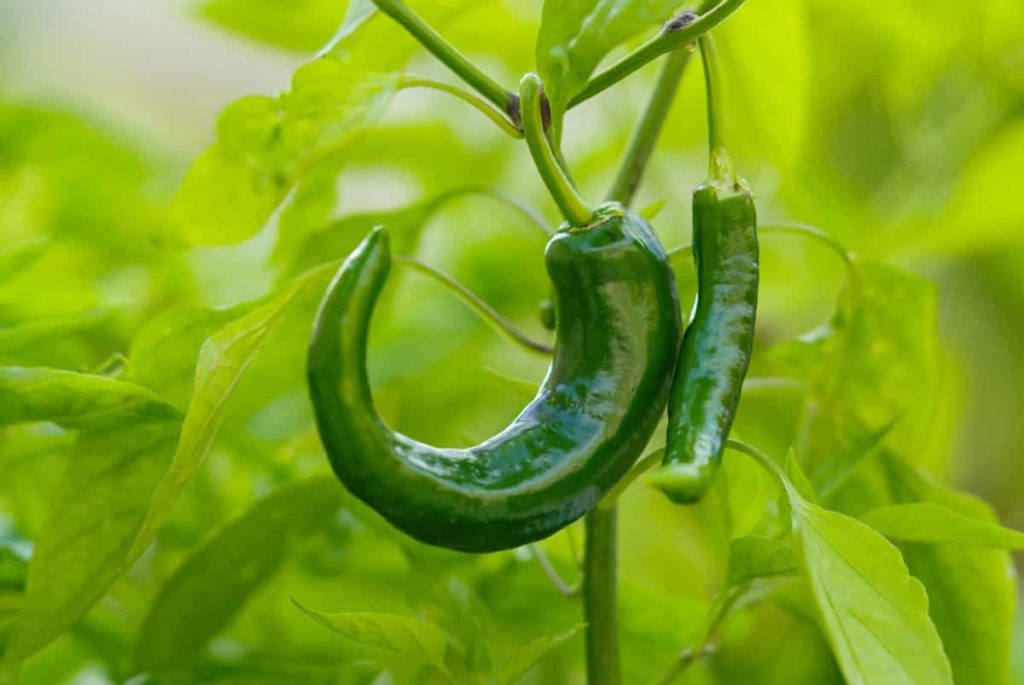
Use hydroponics
In addition to traditional methods, hydroponics can shorten the time it takes to harvest your chilies. Growing peppers in this manner can result in bumper crops for the first three years, after which the plant’s productivity and fruit quality diminish. Many pepper plants, even older ones that will still produce (although with a slower rate of growth), can be maintained alive forever.
One of the most visually pleasing and gratifying early vegetables to cultivate is the chile pepper. Its glossy green leaves remain attractive throughout the growing season, and pests or diseases rarely attack it. The chili peppers are also a visual treat; the plant’s vibrant colors make the peppers seem like jewels.
Using water walls
Peppers are among the crops that benefit greatly from water walls to prolong their growing season. The plastic “walls” are filled with water to create a teepee shape above your plant, which traps heat during the day and helps maintain a comfortable nighttime temperature. In the spring, we use these to ensure that our pepper seedlings grow twice as large as those not covered.
Use greenhouses
We often remove the water walls when temperatures rise to 60 degrees or above at night. You can do it in a greenhouse or hoop house if you want to grow peppers despite the chilly spring weather. Naturally, they are useful during the spring’s frequent hailstorms. You can speed up the development of your pepper plants by keeping them at a comfortable temperature. To prepare their soil for growing peppers in the spring, some people cover it with black plastic and let the sun heat it.
Frequently asked questions about green chilies (FAQ)
How can I make my chilli plant grow faster?
You can speed up the development of your chilli plants in several ways. To jump on the growing season before the warm weather, plant your seeds early, give them lots of warmth, and use season extenders or indoor lights. Grow them where they’ll get plenty of sunlight; peppers thrive in the heat. Learn more about the best practices for accelerating chilli plant development above.
In case you missed it: How to Grow Cucumber Plants Faster: Best Tips to Increase Flowering, Fruiting, and Production Yield
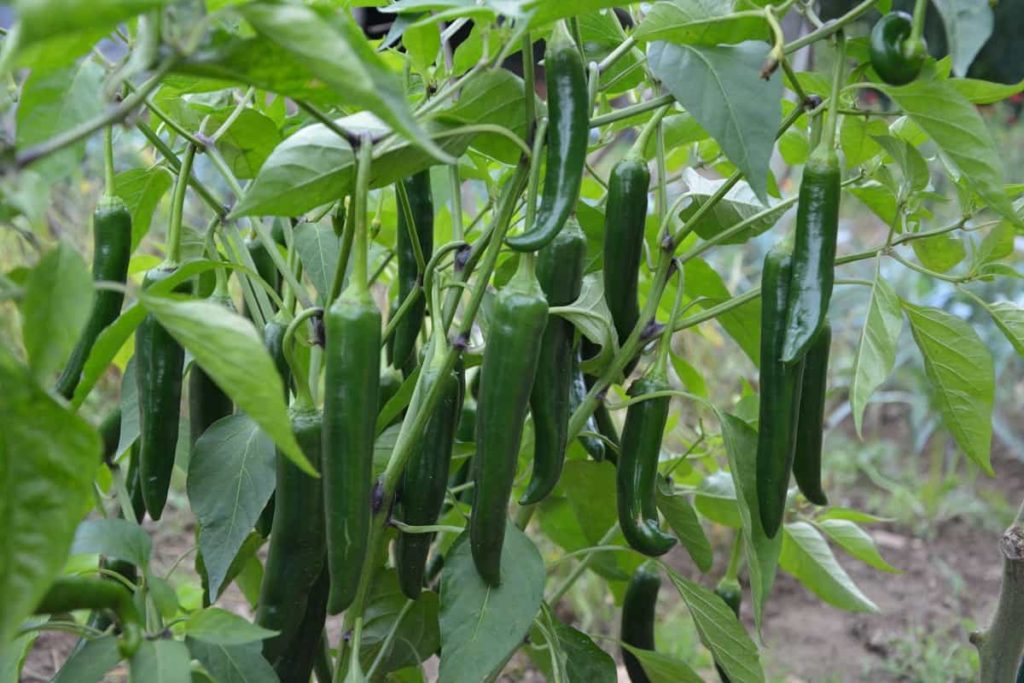
Why are my chilli plants growing so slowly?
Pepper plants often experience slow development, but this is easily remedied. If you’re worried that your pepper plants aren’t going to grow after weeks of planting, know that you’re not alone. Your pepper plants’ growing circumstances are probably not suitable for quick growth. There are several potential causes for an unfavorable atmosphere. It’s usually not hard to fix the most frequent causes of pepper plants not growing as fast as they should. Pepper plants won’t flourish unless they get enough sun.
They require eight hours of daily sunshine. Without enough exposure to light, pepper plants will be unable to manufacture the necessary energy for growth. Growing peppers indoors or in a shady garden area can be difficult since the plants need much light. If you want to grow peppers indoors, it is recommended that you get a set of grow lights. Root damage is a common issue while planting. The plant’s growth can be stunted or even stop completely if the roots are harmed while moving outside.
If at least half of a plant’s roots are undamaged, the plant can survive, but the harvest will be postponed until the following year. The lack of air and water in compacted soil hinders the fast growth of pepper plants. Roots cannot grow to deeper levels in compacted soil, limiting plant absorption of water and nutrients. Using a garden fork, break up the soil to make it workable again. To avoid compacting the soil too much while transplanting it into a container, give it a little pat.
A pepper plant can get root bound if its container is too tiny. Only in suitable pots can peppers reach their full potential in terms of height. The soil capacity of a container for a pepper plant should be at least three gallons, preferably five gallons. There’s a chance that repotting your pepper plant into a bigger container can jumpstart its growth if it has ceased doing so in its present digs. If there are many weeds in the soil, pepper plants may not develop as quickly.
Weeds are a serious problem because they may crowd out beneficial plants, reduce crop yields, and even promote the spread of disease. Even if you don’t have insect problems, weeds can make your yard a welcoming place for them to multiply. Insects, fungi, and bacteria can all inhibit pepper plant development. Aphids are typical insects that can drain your pepper plants’ water and nutrients. Aphids prevent a plant from developing normally because they consume their food supply.
If pests and diseases are to blame for your pepper plants’ stunted development, you should expect to see more indicators of insect damage and disease. Examine the bottoms of leaves for signs of damage, such as stains, holes, and bugs. To get rid of annoying bugs, spray an organic insecticide on them. If delayed growth is due to disease, all damaged plants must be removed and thrown away.
In case you missed it: Vegetable Growing Season Chart in India: Sowing Guide, Germination and Planting Calendar
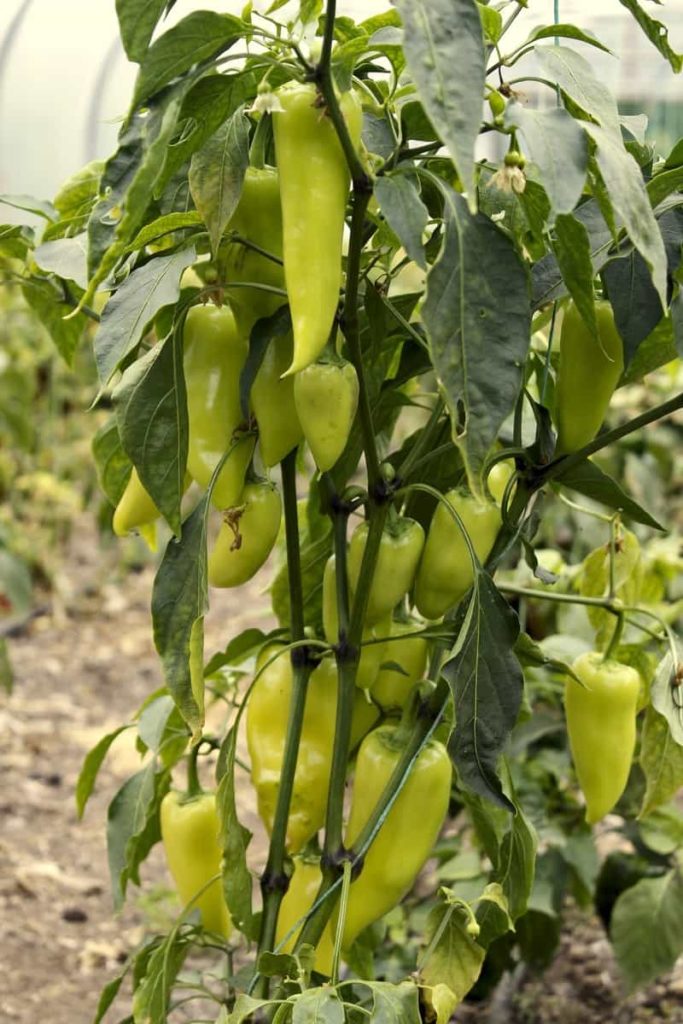
What is the best fertilizer for chilli plants?
Chilies benefit greatly from compost and horse dung as organic fertilizers when grown in soil. The vegetable bed is fertilized by spreading horse dung over it and then dug up. Since the components of mist bed compost decompose slowly, its effects last a long time. Composting is the first step in making fertilizer available to plants. However, it is often only used in the garden. This kind is not used for outdoor plants or balconies because of its unpleasant odor.
A compost pile is an excellent addition to any garden, so long as you have room for it, especially if you plan to grow chilies there. No cheaper or better fertilizer material exists. When composting, bear in mind the so-called n/c value. This number represents the ratio of woody to green elements. This fertilizer works well for container and balcony plants.
Here, a clean granulate lasting up to six months is the most practical option. In many cases, this supplies the whole season. Long-term fertilizer that delivers results should be rich in nitrogen, phosphorous, potassium, and trace elements. The granulate’s structure allows for the slow release of these. This is how the hot pepper constantly gets the organic components it needs to thrive.
Conclusion
Growing green chilies in one’s backyard doesn’t need any effort at all. Growing chilies is an excellent activity for every gardener, regardless of their skill level in tending to plants. Growing green chiles is a breeze, but if you give them too much water, it might stunt their development. Start planting your green chilli plants now, and happy gardening.
- Profitable Village Farming Business Ideas in 2024
- High-Yield Aquaculture: Fast-Growing Fish for Farming
- Effective Fish Pond Construction Techniques for Beginners
- Irrigation and Water Management in Pineapple Farming
- Blossom to Harvest: Mastering Flowering and Pollination in Papaya Farming
- Pig Fattening Essentials: From Selection to Sale for Beginners
- Raising Wagyu Cattle: A Complete Guide for Premium Beef Production
- Soil Types and Their Water Holding Capacity
- Optimizing Irrigation Schedules for Coconut Groves for Enhanced Yield
- Espresso Your Garden: Coffee Grounds for Healthier Acid-Loving Plants
- The Best Soil Mix for Snake Plants: How to Mix Your Own Snake Plant Soil
- Green Thumb Success: Expert Tips for Cultivating Greenhouse Beans All Year Round
- Bloom All Year Round: The Ultimate Guide to Indoor Hyacinth Care
- Eco-Friendly Gardening: How to Make Liquid Fertilizer from Kitchen Waste
- Ultimate Guide to Grow Anise in Pots: Explore Seed Propagation to Harvesting
- Guide to Raising Chester White Pigs: Discover Breed Facts to Growth Management
- Mastering the Elegance: The Ultimate Guide to Weeping Cherry Tree Care, Planting, and Maintenance
- Ultimate Guide to Planting Garlic in Grow Bags: Growing Strategies for Beginners
- How to Fix Spider Plant Leaf-Related Problems: Natural and Organic Remedies
- 10 Reasons Why Your Tulsi Plant is Shedding Leaves: Home Remedies and Solutions
- Optimizing Growth and Yield: The Advantages of Palm Bunch Ash Fertilizer
- Utilizing Neem Oil Extract as a Natural Pesticide for Hydrangea
- From Soil to Harvest: Various Ways in Which Farmers Can Use AI Tools
- Steps to Encourage and Induce Citrus Flowers: A Comprehensive Guide
- How to Fix Snake Plant Leaf-Related Issues: Natural and Organic Remedies
- Transform Your Garden into a Fragrant Oasis with Raat Ki Rani (Night Blooming Jasmine)
- Discover the Ideal Chicken Breeds for Philippine Farms
- How to Create a Poultry Egg Farm Business Plan for Profits
- Grow Lemon Cucumbers Like a Pro: Insider Techniques for Bountiful Yields
- Ultimate Guide to Caring for Your Pink Princess Philodendron: Tips for Thriving Variegation
- Areca Nut Profit Per Acre: Calculating Yield and Cost of Cultivation
- How Kaveri Chicken is Becoming a More Profitable Breed in Indian Backyards
- Transform Your Barn: 9 Steps to Convert a Horse Stall into a Chicken Coop
- Exploring Suffolk Sheep Disadvantages with Limitations and Challenges
- Guide to Solving Potted Lemon Tree Problems: How to Revive Lemon Tree in Containers
- Steps to Encourage Female Pumpkin Flowers: Best Strategies for More Flowers and High Yields
